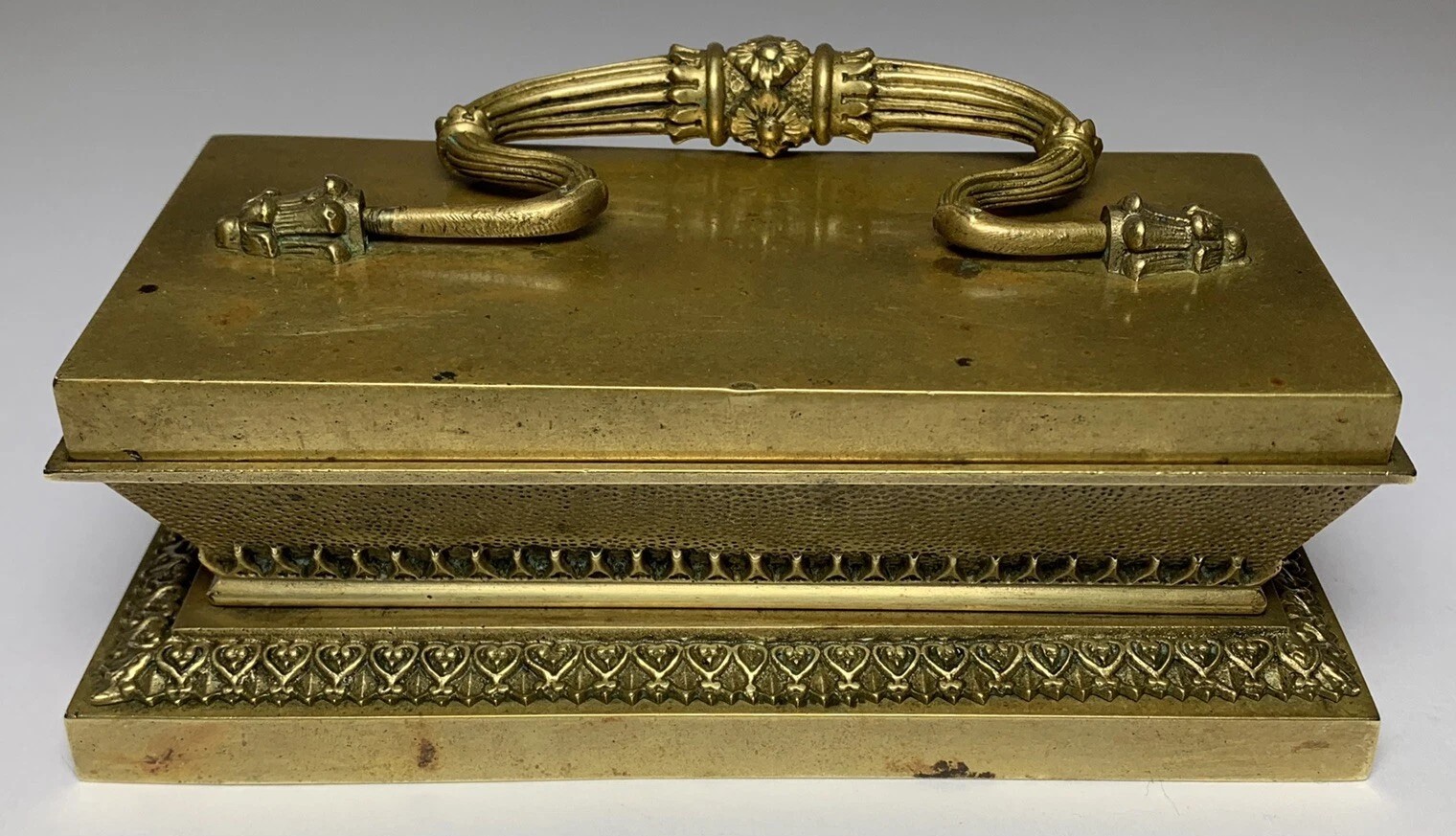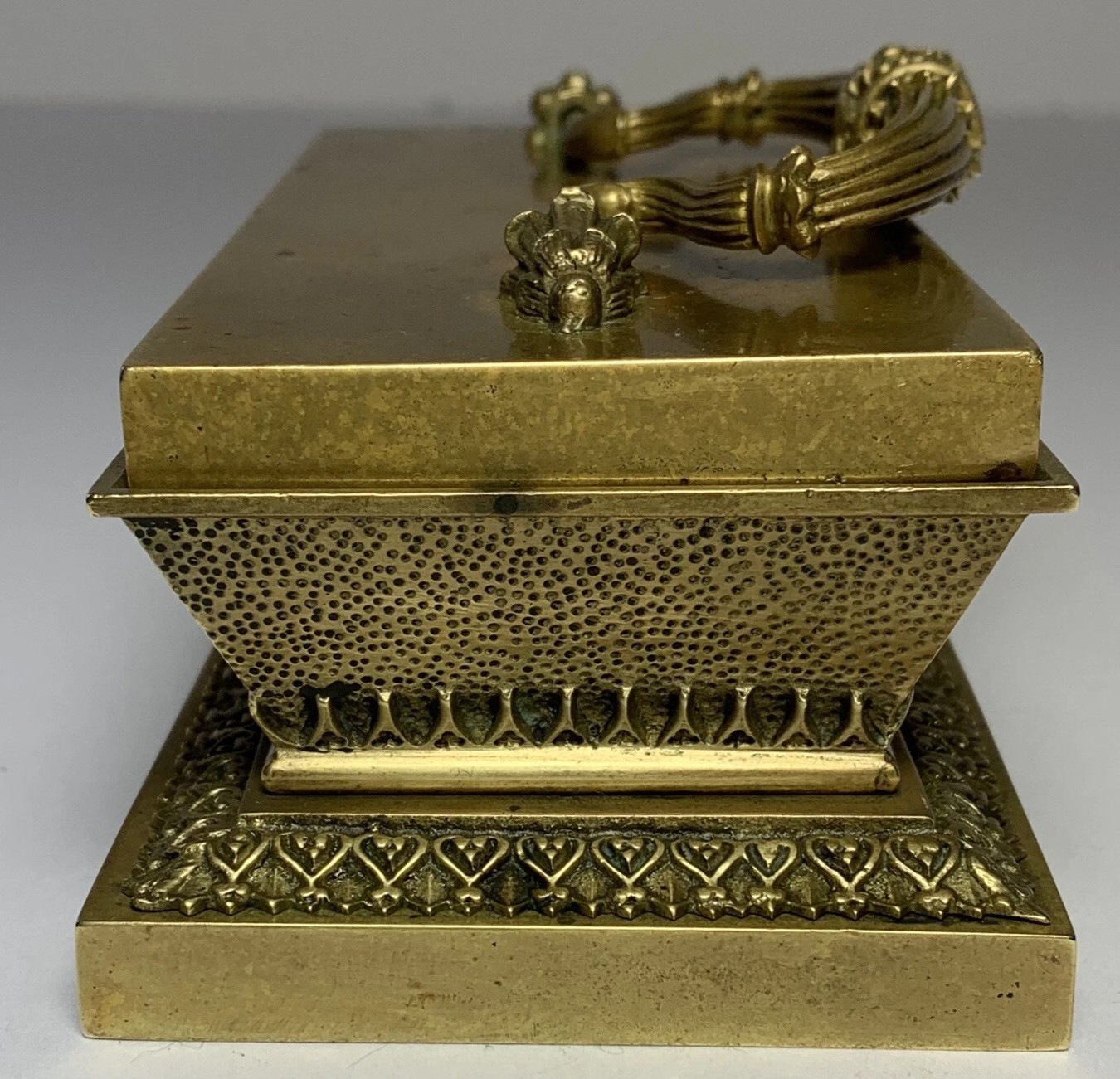
Bronze Sarcophagus Inkstand
| Categories | Bronze - Brass - Copper |
| Material | Bronze |
| Markings | Unmarked |
| Manufacturer | Undetermined |
| Origin | France |
| Date or Era | circa 1820 |
| Measuring | 6 ⅛” x 3” x 2 ⅝” high |
This is an early 19th-century bronze inkstand, most likely French, fashioned in the form of a sarcophagus.
- Overall Form: The piece has a rectangular, casket-like shape, characteristic of a sarcophagus. It is made of bronze.
- Base: The inkstand rests on a rectangular base adorned with a repeating pattern of palmettes along its lower edge.
- Body: The main body of the sarcophagus is decorated with a fine, granular, hammered texture.
- Lid: The flat lid is topped with an ornate, cast bronze handle. This handle is detailed with reeded sections and a central floral motif flanked by stylized palmettes at its base.
- Interior: When the lid is removed, the inkstand reveals removable bronze inserts:
- One insert is a circular inkwell, with a top featuring a decorative, openwork rosette and a central knob for easy removal.
- The second insert is a circular sander or pounce pot, with an openwork top featuring a swirl pattern and a central knob. This was used to sprinkle blotting sand or powder onto wet ink to dry it.
- Dating: The style of the inkstand, with its Neoclassical motifs and high-quality bronze casting, aligns with the French Empire or Regency period.
Historical Context for a Sarcophagus
The choice of a sarcophagus shape for a desk accessory, while seemingly unusual today, is rooted in the artistic and cultural trends of the early 19th century, a period often referred to as the Neoclassical era.
The key event that sparked a widespread fascination with ancient Egypt and its artifacts was Napoleon Bonaparte’s military campaign in Egypt (1798-1801). Although a military failure, the expedition was a massive cultural success. Napoleon brought with him a team of over 150 scholars, artists, and scientists who meticulously documented the ancient monuments and daily life of Egypt.
Their findings were published in a monumental, multi-volume work called Description de l’Égypte (1809-1828), which created a phenomenon known as Egyptomania across Europe. The discovery of the Rosetta Stone during this time only fueled the obsession.
This “Egyptian Revival” style influenced all forms of decorative arts, from furniture and jewelry to architecture. Artists and artisans, particularly in France, incorporated Egyptian motifs such as:
- Sphinxes
- Obelisks
- Lotus flowers
- Palm leaves
- Sarcophagi
The sarcophagus shape, in particular, was re-imagined as a symbol of classical elegance and monumental grandeur, rather than solely for funerary purposes. It was an exotic and fashionable form that evoked a sense of ancient history and imperial power, a theme that resonated strongly with the French Empire under Napoleon and the subsequent periods.
Sold for $225 in August 2025
Content disclaimer. The information posted is the owner’s best knowledge and may not have been vetted by the SOIC. We welcome comments, corrections, and additions, working to make our website information comprehensive and accurate.
Join the Society of Inkwell Collectors (SOIC) – it’s free!
Founded in 1981 as a non-profit organization,
we are documenting inkwells (and accessories).
We’re here to help and inform!











